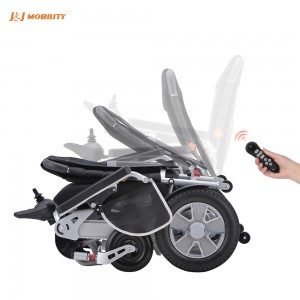5 Key Differences Between Electric Wheelchairs and Mobility Scooters
Electric wheelchairs and mobility scooters are both popular transportation options for elderly and disabled individuals. However, they have distinct differences that may influence your choice. Here are five key differences to help you determine which option is more suitable for you.
1. User Physical Condition Requirements
This is the most crucial factor to consider. Mobility scooters are designed for users who have good upper body strength, as they require the ability to maintain position comfortably for extended periods. In contrast, electric wheelchairs (or motorized wheelchairs) have less stringent physical requirements. As long as users can think clearly and operate the joystick on the armrest, they can use an electric wheelchair.
2. Operating Mode
The operation modes of these devices differ significantly. An electric wheelchair features a joystick controller located on the armrest, allowing users to move forward, backward, and turn with ease. On the other hand, a mobility scooter is controlled using a tiller handle, necessitating the use of both hands for steering and control. This makes mobility scooters generally require better upper body strength from users.
3. Application Scenarios
The intended use for each device varies. The turning radius is a critical specification; a shorter turning radius allows for better maneuverability in tight spaces. Electric wheelchairs typically have a smaller turning radius than mobility scooters, making them more suitable for indoor use. If you heavily rely on a mobility device for daily tasks, an electric wheelchair is likely your best option. Conversely, if you seek a device for leisurely outdoor activities, a mobility scooter may be more appropriate.
4. Design and Shape
The design is one of the most noticeable differences. Electric wheelchairs retain the traditional shape of standard wheelchairs, while mobility scooters resemble electric scooters and often have a more modern aesthetic. Many seniors with good physical condition prefer the stylish look of mobility scooters over electric wheelchairs.
5. Comfort Level
Comfort is another important consideration. Some users may opt for a customized electric wheelchair tailored to their body shape, although these can be quite expensive. In contrast, mobility scooters primarily offer adjustments to the tiller. Electric wheelchairs typically allow for multiple adjustable features, such as headrests, armrests, backrests, seat width, height, and foot pedals, enhancing overall comfort.
Conclusion
Whether you choose an electric wheelchair or a mobility scooter, the key is to find the option that best meets your physical needs. If you’re still unsure about your choice, please reach out to us. J&J Mobility is a comprehensive manufacturer specializing in research, production, and sales, and we are happy to provide professional advice.
Post time: Oct-28-2024


